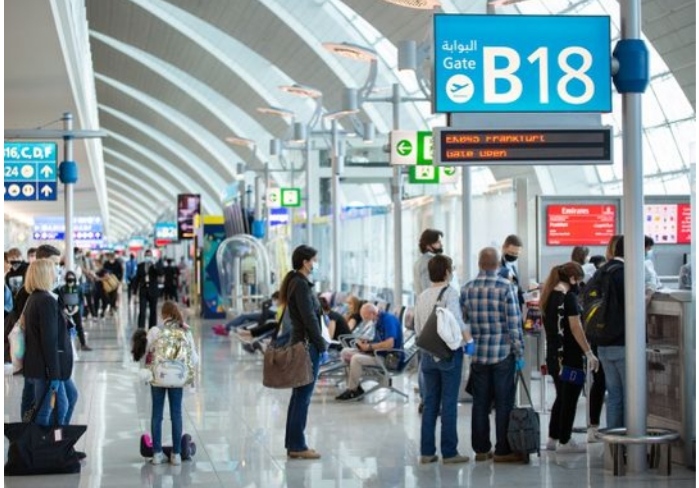Dubai-to-Mumbai is world’s 5th busiest air route

India bound flights from Dubai are finally running at full throttle after a two-year hiatus created by COVID-19 breakout. All indications point to a peak summer demand for travel.
India’s decision to allow full international flight services from April is already showing results, with the UAE-India sector shooting up the charts to be among the world’s busiest. The Dubai-Mumbai services is currently the world’s fifth busiest with more than 218,000 seats as flight capacity, while Dubai-Delhi is at ninth spot with 179,000 seats plus.
“This is natural given the huge number of flights that Emirates airline and flydubai have to and from India with onward connections, which gives Indians an opportunity to travel after facing restrictions the last two years,” said aviation industry analyst Ashwini Phadnis.
The Cairo-Jeddah route is at the top in the April rankings put out by the aviation consultancy OAG. With 334,157 seats. And followed closely by London Heathrow to New York’s JFK with 273,596 eats.
The Dubai to Riyadh services. Which had been the world’s busiest for March, dropped to seventh spot. This sector could regain some of the numbers shortly with the Eid break coming up early May.
Since the full resumption of international flights by India, Emirates alone has ramped up capacity on the route to 170 flights a week. Budget airline flydubai operates around 30 weekly flights between India and UAE.
It’s not just Dubai airlines that are ramping up. Air Arabia Abu Dhabi, the less than two-year old joint venture between Etihad Airways and Sharjah’s Air Arabia, is launching new services to Chennai and Jaipur. India’s Go First, formerly known as Go Air, will be operating daily flights from Abu Dhabi to Mumbai, Kannur, and Delhi in response to an ‘increased demand for these routes’.
Bookings on these route have surged with the relaxation of restrictions on PCR tests as well. “We expected Ramadan to be on the lower side, but airlines have not reduced fares due to strong demand,” said Suraj Ramesh from Al Badie Travel Agency.
“In June, July and August, fares will be on the higher end due to the school break,” Ramesh said. “The next dip in fares should probably be in the second week of September.”
Riyadh had been the busiest air route from Dubai for months.
In March, the route had close to 260,000 airline seats– that’s almost 40,000 seats more than what airlines deployed on the Dubai-London route.
New York-London finished fourth in aviation consultancy OAG’s rankings for March with about 175,000 seats.
While all of this points to a return to ‘normalcy,’ China’s biggest city and financial hub Shanghai is grappling with a recent spike in COVID-19 cases and that has got some industry insiders worried again.
“It was never going to be a straightforward recovery from the global pandemic for the airline industry – previous events can confirm that there will be bumps on the road to a full recovery,” analyst John Grant said in an OAG blog article.
“The last week has been challenging in Europe with staff shortages across many airlines and airports while in China the zero-Covid strategy continues to have millions of people locked in at home.”
Meanwhile, India’s highly-competitive domestic aviation market is expected to fully recover this year, according to most industry sources. “People are pleased to see the situation developing in India and moving back to a more normal environment,” IATA Director-General Willie Walsh said during a media briefing earlier this month. “Clearly, the situation there had been very tough for airlines and the restrictions that the government imposed during the period of high outbreaks were very restrictive and unique to India.”
“The sooner we get back to a more normal competitive operating environment in India, the better for everybody.”
International services are also showing some signs of revival with airlines like Indigo ramping up operations in a big way. According to OAG’s March report, India’s largest low-cost carrier flew more than 2 million passengers in the month, which was the highest for any airline in Asia.
It is “a strong indicator that the nation is bouncing back strongly from the pandemic – with the easing of restrictions around the world, we look forward to opening more routes and frequencies,” Indigo CEO Ronojoy Dutta said in a statement.




